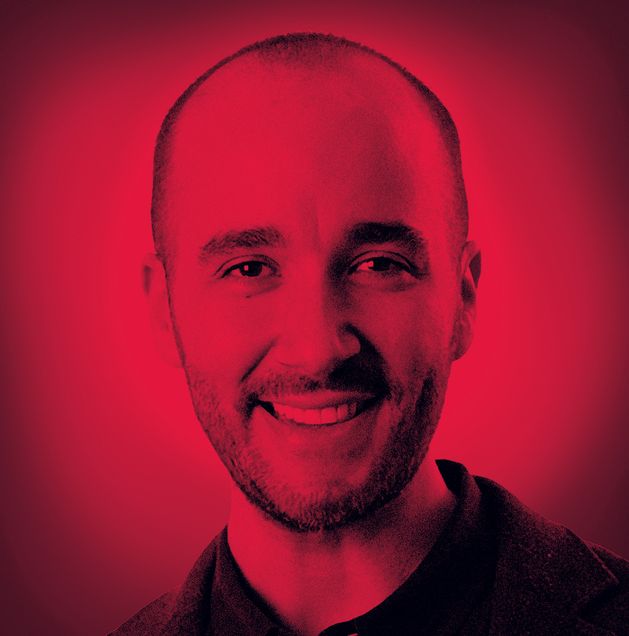Results
Arts & 科学 researchers knew no limits in 2023–24. To better understand our world, they traveled to Istanbul comedy clubs, examined Ukraine’s economy, and, miraculously, looked eight billion years into the past.
Arts & 科学 researchers knew no limits in 2023–24. To better understand our world, they traveled to Istanbul comedy clubs, examined Ukraine’s economy, and, miraculously, looked eight billion years into the past.

Anthropologist Sümeyra Güneş is a regular at Istanbul, Turkey, comedy clubs, but she’s not there just for the jokes. Güneş researches how comedians are making marginalized communities visible through humor, often toeing the line of what’s considered an “acceptable” joke to make in public.
“I look at how stand-up comedians claim visibility and carve themselves alternative spaces on the stage in a highly censored public space,” says Güneş (GRS’27), a PhD candidate in anthropology.
The ambiguity of the Turkish Criminal Code—specifically Article 216, which, she says, is against “provoking the public to hatred, hostility, and degradation”—makes it hard to know what’s considered a criminal offense. “They’re not sure what will make them end up in jail or what could get them canceled,” says Güneş, who grew up in Turkey. “But at the same time, they cannot resist the urge to try, because the boundaries are there to be pushed.”
The stand-up comedians she’s interested in hail predominantly from underrepresented communities, like LGBTQ+ people, as well as religious and ethnic minority groups. Through humor, “they’ve been trying to resist systemic silencing and assimilation,” Güneş says. “It’s actually a way of claiming voice over your own identity.”
Güneş believes that interrogating where lines are drawn between acceptable representation and offense opens the door to bigger conversations about how to regulate speech in other spaces, like on social media platforms.
View extended version of the story

In 2017, Ukraine imposed economic sanctions on Donbas, an eastern region of the country bordering Russia. Pro-Russian secessionists had infiltrated the government and declared independence. Ukraine announced a blockade on trade as a way of using financial pressure to encourage policy change.
For the past 10 years, Russo-political occupation has been a threat to Eastern Ukraine and has used economic sanctions to gain leverage. But while these tactics are politically popular, do they make economic sense?
Raymond Fisman, the Slater Family Professor in Behavioral Economics, explored the financial consequences of Ukraine’s Donbas sanctions in a paper coauthored by Giovanna Marcolongo (GRS’20) and Meng Wu (GRS’22,’22) and published in Social Science Research Network (January 2024).
The team examined whether the use of sanctions undermined Ukraine’s political intentions. Donbas is Ukraine’s primary source of anthracite coal. The sanctions didn’t cut off Donbas from global coal markets. Rather, the region used Russia as an intermediary to get its out-put onto world markets. Cutting off direct trade simply meant that Ukraine ended up purchasing Donbas coal at an inflated price. “Cutting off trade with the breakaway republic made for good politics but was harmful to Ukraine’s economy,” Fisman says.
He adds that a similar “workaround” is arising with the current blockade of Russia by NATO and other international partners. Germany can’t export cars to Moscow, for example, but Dubai can import German cars and resell them to Russia. While Russia may be paying an inflated price, the nation still has access to the same consumer goods.
Economic sanctions are a popular tool for encouraging policy change—but the research team’s findings show that they can often be self-defeating.
View extended version of the story

Exploding stars. Colliding galaxies. A mountaintop camera that can see the beginning of time. These aren’t plot points in the latest sci-fi series. They’re the real-world building blocks of the Dark Energy Survey (DES), a decade-long effort to map the universe and to understand what it’s made of.
Since DES launched, Dillon Brout, an assistant professor of astronomy and physics, and his peers on the cosmological analysis team have conducted the largest survey of supernovae ever, identifying approximately 1,500 of the exploding stars and using each one as a precise point in their map of the expanding universe.
To collect their data, they photographed the sky with the 570-megapixel Dark Energy Camera, mounted on a telescope in the Chilean Andes. The researchers then took precise measurements from each photographed supernova to determine the movement of galaxies and the rate of the universe’s expansion.
“What we’re doing with the supernovae is using them as a measuring stick to study the interplay between the gravitational pull of dark matter inwards and the outward pressure of dark energy,” Brout says. Approximately 95 percent of the universe consists of dark matter and dark energy, opposing forces that scientists know must exist but can’t see.
Some of the supernovae they photographed were more than eight billion light-years away. “This means that we get to see the universe as it was more than half of the way back to the big bang,” says Brout.
View extended version of the story